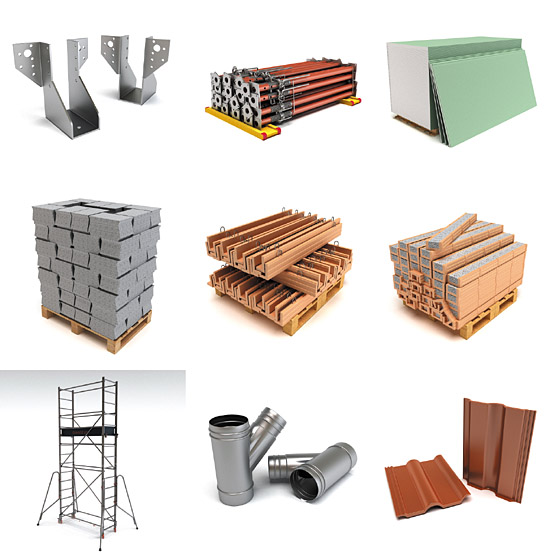Building material
A building material is a material (in the form of raw materials, auxiliary materials or semi-finished ) and is used for erecting buildings and buildings.
The earliest materials used by man were wood, clay and natural stones. In volume terms predominate today the so-called mass raw materials such as sand, gravel, lime, and it produced secondary raw materials such as cement, concrete, glass or plastics.
In the statutory nomenclature materials are referred to as product and regulated according to the Construction Products Regulation. The German Chemicals Act and the REACH Regulation in this case between preparations and the products (Products ), for each of which relevant guidelines and regulations must be observed.
Colloquially also imprecise material or consumable material used in this context, are technically distinguished.
Basics
Many building materials are not used as raw materials, ie in a form in which they occur in nature, but the raw materials are mostly processed and refined. From clay mud bricks are made, for example, which are easier and more economical to process than the original material. Another example: Limestone is a material that is used for the production of cement ( building material ), which in turn is a part of the concrete ( as a building ). This is one concrete components ago such a support which are then incorporated into a building.
The use of building materials is always dependent on the state of the art in a culture. New building materials often open up new possibilities in architecture, the style of modernism was only made possible by developments in glass technology.
Each building material requires a different type of construction. With stones to create a solid construction while steel is particularly suitable for skeleton structures.
Are sold building materials in the construction materials segment, which includes both wholesale as well retail industry.
The materials science concerned with the properties of materials and their testing. Are the properties of a building material is not known exactly or is a false construction material used, this can have negative consequences, such as damage and / or injury.
To date, there are many materials whose vapors are harmful to health. The building materials manufacturers have indeed the authorization procedure before the German Institute for Building Technology their product formulations deposit - but at what exhalations performs a recipe, they do not specify. This will be examined only in a few exceptional cases, such as in the approval of several new sealants and flooring. The Federal Environment Agency is - out recommendations which emission values should not be exceeded - so far non-binding. Many building materials manufacturers fail to tackle, make measurements for their products and publish it.
Classification of building materials
A fundamental distinction is that in organic materials (eg, wood or cellulose) and inorganic materials. Today, predominantly inorganic materials used in construction. In addition to recycled building materials is different (also called secondary materials ) and materials without recycled content.
Distribution
Building materials are sold in the building materials trade, DIY stores and on the Internet. Important intermediaries are craftsmen and architects. Advise clients in the choice of building materials.










